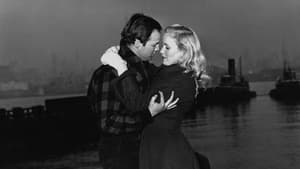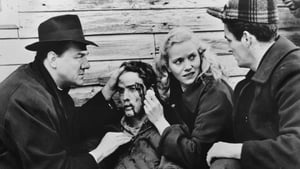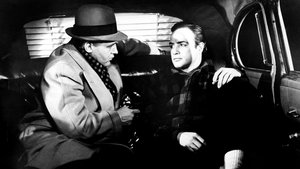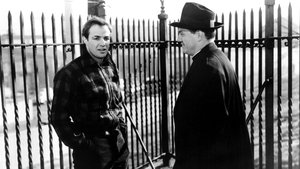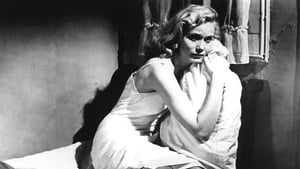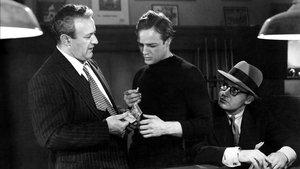Contact: [email protected]
Video Sources 0 Views
- Watch trailer
- On the Waterfront

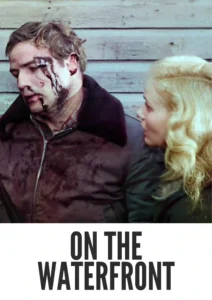
Synopsis
Table of Contents
ToggleFilm Review: On the Waterfront 1954 – A Timeless Classic Revisited

Introduction
In the vast tapestry of cinematic history, few films stand as tall as “On the Waterfront” 1954. Directed by Elia Kazan, this masterpiece is a poignant exploration of morality, corruption, and redemption set against the backdrop of New York’s bustling waterfront. In this review, we’ll delve into the profound impact of the film’s early colored version and its enduring legacy in the realm of classic cinema.
Check The Full Colorized Movies List
Check Our Colorized Movies Trailer Channel
Understanding On the Waterfront 1954: Director, Cast, and Genre
Directed by the visionary Elia Kazan, “On the Waterfront” 1954 boasts an ensemble cast led by the incomparable Marlon Brando, Eva Marie Saint, and Karl Malden. Kazan’s directorial prowess shines through as he navigates the gritty streets of New York to deliver a tale that transcends mere entertainment, delving deep into the human condition. The film seamlessly blends elements of crime, drama, and romance, captivating audiences with its raw emotion and unflinching realism.
Exploring the World of On the Waterfront 1954: Plot and Characters
Set amidst the docks and warehouses of Hoboken, New Jersey, “On the Waterfront” 1954 follows the journey of Terry Malloy (Marlon Brando), a former prizefighter turned longshoreman. Terry finds himself ensnared in a web of corruption orchestrated by the powerful union boss Johnny Friendly (Lee J. Cobb). However, when he becomes entangled in a murder plot and falls for Edie Doyle (Eva Marie Saint), the sister of the victim, Terry is faced with a moral dilemma that will test his loyalty and integrity. The film’s supporting cast, including Karl Malden as Father Barry and Rod Steiger as Charley Malloy, delivers performances that are equally compelling, adding depth and complexity to the narrative.
The Art of Film Colorization
Film colorization, the process of adding color to black and white films, has long been a subject of debate among cinephiles. While some argue that it breathes new life into classic movies, others contend that it detracts from the original artistic vision. In the case of “On the Waterfront” 1954, the decision to release an early colored version raises questions about the preservation of its historical integrity.
Early Colored Films: A Brief History
The emergence of early colored techniques in cinema marked a significant turning point in the industry’s history. From hand-tinted frames to Technicolor extravaganzas, colorization revolutionized the way audiences experienced film. However, the transition from black and white to color was not without its challenges, as filmmakers grappled with questions of aesthetics, authenticity, and artistic intent.
On the Waterfront 1954 and Its Early Colored Version
The decision to release “On the Waterfront” 1954 in a colorized format was met with mixed reactions from fans and critics alike. While some welcomed the opportunity to see the film in a new light, others expressed concern about the preservation of its original aesthetic. However, proponents of colorization argue that it enhances the film’s visual appeal, breathing new life into its iconic scenes and immersing audiences in the world of 1950s New York.
The Debate Over Film Colorization
The debate over film colorization has raged on for decades, with passionate arguments on both sides of the issue. Proponents of colorization argue that it updates classic films for modern audiences, making them more accessible and engaging. However, critics fear that it erases the historical significance and artistic integrity of these films, robbing future generations of the opportunity to experience them as they were originally intended.
Examining On the Waterfront 1954 as an Early Colored Film
Colorization undoubtedly alters the viewing experience of “On the Waterfront” 1954, imbuing it with a new sense of vibrancy and depth. However, purists may argue that the film loses some of its noir charm in the transition to color. Ultimately, whether one prefers the original black and white version or the early colored version is a matter of personal preference.
Influence and Legacy: On the Waterfront 1954’s Impact on Cinema
The influence of “On the Waterfront” 1954 extends far beyond its initial release, inspiring generations of filmmakers and reshaping the landscape of American cinema. Its themes of social justice, moral ambiguity, and the struggle for redemption continue to resonate with audiences around the world, cementing its status as a timeless classic.
Director’s Cinematic Legacy: Beyond On the Waterfront 1954
Elia Kazan’s legacy as a filmmaker extends far beyond “On the Waterfront” 1954, encompassing a diverse body of work that includes such classics as “A Streetcar Named Desire” and “East of Eden.” His unique blend of realism, social commentary, and emotional depth has left an indelible mark on the world of cinema, influencing countless filmmakers and earning him a place among the greatest directors of all time.
Themes Explored in On the Waterfront 1954
At its core, “On the Waterfront” 1954 is a powerful exploration of moral ambiguity, personal integrity, and the struggle for justice in a corrupt world. Its themes of loyalty, betrayal, and redemption resonate with audiences on a profound level, offering insights into the complexities of the human condition.
Reception and Controversy Surrounding On the Waterfront 1954
Upon its release, “On the Waterfront” 1954 received widespread critical acclaim, earning twelve Academy Award nominations and winning eight, including Best Picture and Best Director. However, its colorized re-release has sparked controversy among fans and critics alike, with some embracing the update and others lamenting the loss of its original aesthetic.
Where to Watch On the Waterfront 1954 Online
For those eager to experience “On the Waterfront” 1954, streaming platforms such as Netflix, Amazon Prime, and Hulu offer convenient access to this cinematic gem.
FAQs About On the Waterfront 1954
What makes “On the Waterfront” 1954 a timeless classic? “On the Waterfront” 1954 is celebrated for its gripping narrative, powerhouse performances, and profound exploration of moral ambiguity.
Is the early colored version of “On the Waterfront” 1954 worth watching? While opinions may vary, the early colored version offers a fresh perspective on the film’s visuals, making it a compelling viewing experience for both new audiences and longtime fans.
What sets Marlon Brando’s performance in “On the Waterfront” 1954 apart? Marlon Brando’s portrayal of Terry Malloy is widely regarded as one of the greatest performances in cinematic history, capturing the character’s inner turmoil with unparalleled depth and intensity.
How does “On the Waterfront” 1954 compare to other films of its era? “On the Waterfront” 1954 stands as a timeless masterpiece, transcending the confines of its era to deliver a powerful and thought-provoking cinematic experience.
What themes are explored in “On the Waterfront” 1954? “On the Waterfront” 1954 delves into themes of loyalty, betrayal, redemption, and the struggle for justice, offering profound insights into the human condition.
What is the significance of “On the Waterfront” 1954 in film history? “On the Waterfront” 1954 is considered a landmark film in cinematic history for its groundbreaking narrative, realistic portrayal of urban life, and influential performances. Its exploration of social issues and moral dilemmas paved the way for a new era of American filmmaking, earning it a place in the annals of cinema history.
Why was “On the Waterfront” 1954 released in a colorized version? The decision to release “On the Waterfront” 1954 in a colorized format was likely motivated by a desire to introduce the film to new audiences and breathe new life into its visuals. While some purists may prefer the original black and white version, the colorized edition offers a fresh perspective on the film’s aesthetic and may attract viewers who are less familiar with classic cinema.
How does the colorization of “On the Waterfront” 1954 affect its overall impact? The colorization of “On the Waterfront” 1954 adds a layer of visual richness to the film, enhancing its immersive quality and making it more accessible to modern audiences. While some cinephiles may prefer the stark beauty of the original black and white version, others may appreciate the vibrancy and depth that colorization brings to the film’s iconic scenes.
What is Elia Kazan’s legacy as a filmmaker, and how does “On the Waterfront” 1954 contribute to it? Elia Kazan’s legacy as a filmmaker is characterized by his ability to tackle complex social issues with honesty and integrity. “On the Waterfront” 1954 is a shining example of his directorial prowess, showcasing his talent for crafting compelling narratives and eliciting powerful performances from his cast. The film’s enduring popularity and critical acclaim are a testament to Kazan’s lasting impact on the world of cinema.
Where can viewers find more information about “On the Waterfront” 1954 and its production history? Fans of “On the Waterfront” 1954 can delve deeper into the film’s production history and cultural significance by exploring behind-the-scenes documentaries, interviews with cast and crew members, and academic analyses of the film’s themes and motifs. Additionally, books, articles, and online resources offer valuable insights into the making of this cinematic masterpiece and its enduring legacy.
Conclusion
In conclusion, “On the Waterfront” 1954 remains a cinematic masterpiece that continues to captivate audiences with its powerful storytelling, unforgettable performances, and timeless themes. While the debate over film colorization rages on, one thing remains clear: the enduring legacy of “On the Waterfront” 1954 will continue to inspire filmmakers and cinephiles for generations to come.
